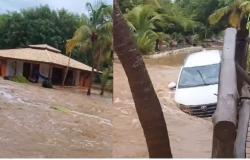The two hundred man crew was on high alert at that moment and everyone had to be at their post. The last time a Dutch naval ship was on the so-called ‘combat watch’ was during the Yugoslavia War in the 1990s.
The threat soon diminished again. The Tromp has now left the Red Sea and the command and air defense frigate is on its way to India. For four weeks, it has continuously contributed to securing shipping traffic against the drones and missiles of the Houthi militants in Yemen.
Edge of escalation
Especially on the night of April 13 to 14, the region teetered on the brink of escalation, when Iran bombarded Israel with hundreds of missiles and drones. Due to air forces and anti-aircraft defenses working together, the attack ultimately caused only limited damage.
“No one could have predicted that such an attack would happen in the region, an attack in which the Houthis also participated,” says Van Beusekom. “We couldn’t contribute to the defense. That was beyond the scope of our mission.”
This contains inserted content from a social media network that wants to write or read cookies. You have not given permission for this.
Click here to adjust your preferences
Moreover, the Tromp was literally too far away from the airspace where the drones and missiles flew. The naval ship was moored in the south of the Red Sea, where the greatest threat to shipping comes from Yemen. A mountain ridge also limited the radar image. “So you don’t see it all happening before your eyes. We didn’t feel like we were in the danger zone. But you know that you are on the edge of the region that is under enormous pressure. We followed it closely.”
Highest threat
The day after the Iranian attack, the Tromp crew continued with the mission undisturbed. They were on their way to the part of the Red Sea with the highest threat, says Van Beusekom. The Smart-L radar in particular did a good job of identifying enemy attacks.
“It is a fantastic radar. In this mission we were actually able to use it for what it was intended for. You are bound by limitations, you do not want to radiate too much energy close to land, but in a war zone you use it for what it is intended for: getting a good picture of what is flying and sailing. With the Smart-L you can even see the migratory birds flying over the Red Sea.”
The Houthis in Yemen have been carrying out attacks with drones and missiles since November to target and dislodge shipping traffic. During the period that Tromp was in the region, dozens of attacks were repelled, including information from Tromp’s radar.
“After the attack on Israel, it seemed as if the activity among the Houthis dropped somewhat, we are not sure if there is a connection. You try to observe a trend, but that is a bit Western, because it is difficult to predict the Houthis.”






